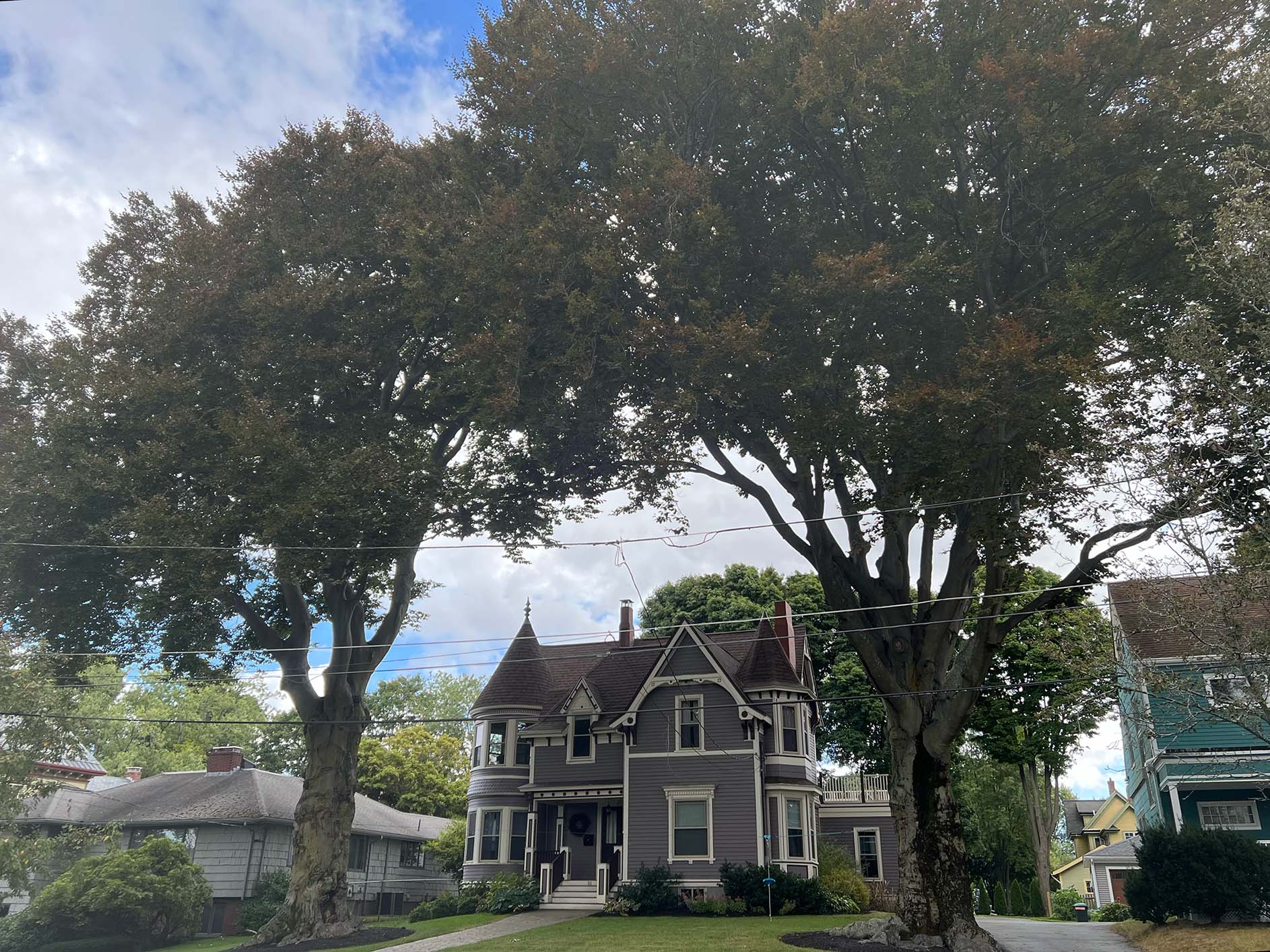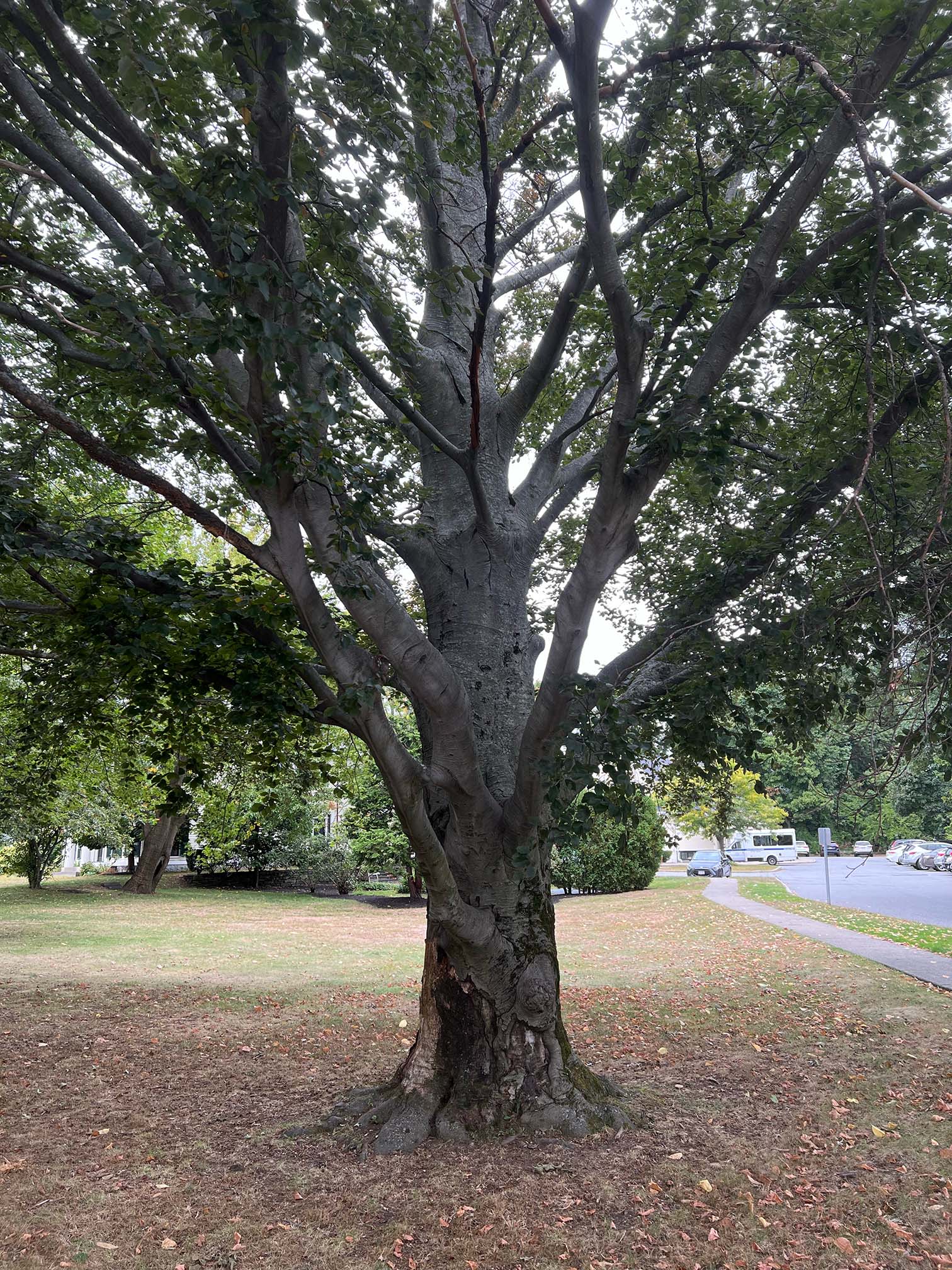Beech Leaf Disease Threatens Melrose Tree Population

Twin Beech Trees on Bellevue Ave
Beech trees, which are among the largest and most majestic trees in Melrose, are under threat from beech leaf disease. The disease, which has been found in large areas of the Northeast and Midwest since it was first discovered a decade ago, is spread by a nematode - a microscopic worm - and can kill large, mature trees within a few years.
According to the Melrose Tree Project, which recently conducted a survey of Melrose’s beech tree population, about half of the city’s beech trees are losing some or all of their leaf canopy, which is often the result of beech leaf disease.
You can read more about beech leaf disease from the U.S. Forest Service here.
The loss of beech trees in Melrose is particularly concerning because these trees grow slowly and can live for hundreds of years. When mature, beeches are considered “marquee” trees that can add tens of thousands of dollars to home values and can provide cooling with as much as a 25 degree temperature difference in their shade. Mature trees also play a role in capturing carbon: while all trees sequester carbon as part of their growth, mature trees can store many times the volume of carbon that younger trees can. When one of these mature trees dies, its ability to sequester carbon is lost as well.

Beech Tree on the Beebe Estate
Earlier this month, the Melrose Tree Project hosted a webinar for community members featuring Donald Gourley and Melonae Cameron from Boston Tree Preservation, a Woburn-based tree company that focuses on using organic methods to support the health of local trees. “One of our main struggles with urban trees,” explained Cameron, “is that they are not just subjected to one stress point. They have multiple ones.” All urban trees are “essentially living in a pot,” she said, with more limited space for their root systems than they would have in the wild. Gourley added, “we sometimes look at the trees in our suburban landscape and wonder why they’re not healthy…it’s not a natural habitat, between three fences, a sidewalk, and a road with a house in the middle.”
Boston Tree Preservation has worked with a number of trees affected by beech leaf disease, and they anticipate there will continue to be need in the next several years. “It is a matter of when, not if, your tree is exposed to” the disease, Gourley said.
While there is currently no cure available for beech leaf disease once it strikes a tree, he explained that other specialists are working on finding ways to eliminate the nematode that causes beech leaf disease, and they anticipate that they will have a solution within a few years. His company’s goal “is to take a tree that would live five to seven years once infected, and then to have a holistic care program for that tree to push its life expectancy out into the double digits, beyond the time it's going to take for entrepreneurs to bring a solution to market.”
“We've just expanded our philosophy,” Cameron added, “and instead of saying, ‘Let's target this pest and try to kill this pest,’ we say, ‘Let's help the whole tree become healthier.’”
With the length of time it takes a beech tree to mature and the vulnerability of young beech trees to the disease, Gourley emphasized that the approach should be to preserve existing trees rather than replace them, whenever possible. “When these trees are lost, they're going to be lost for a while,” he said. “We just can't plant another one and wait, 40, 50 years.”
If you want to learn more about a beech or any other tree, contact the Melrose Tree Project for ideas and resources.

Follow Us: